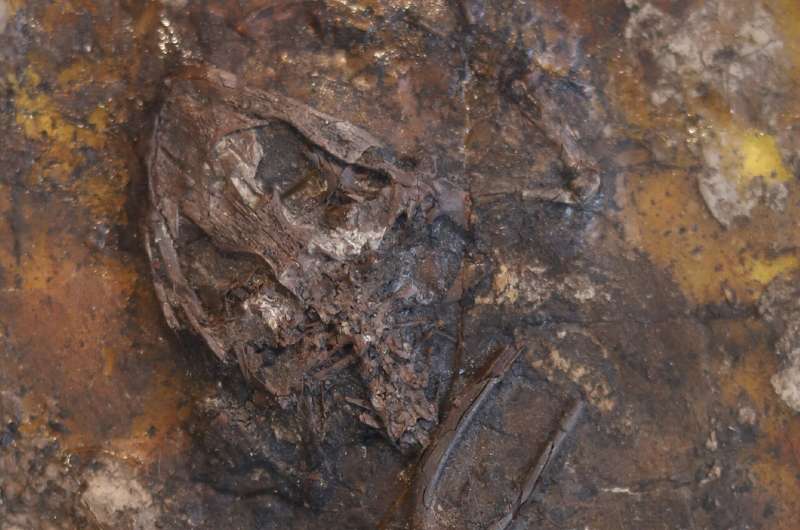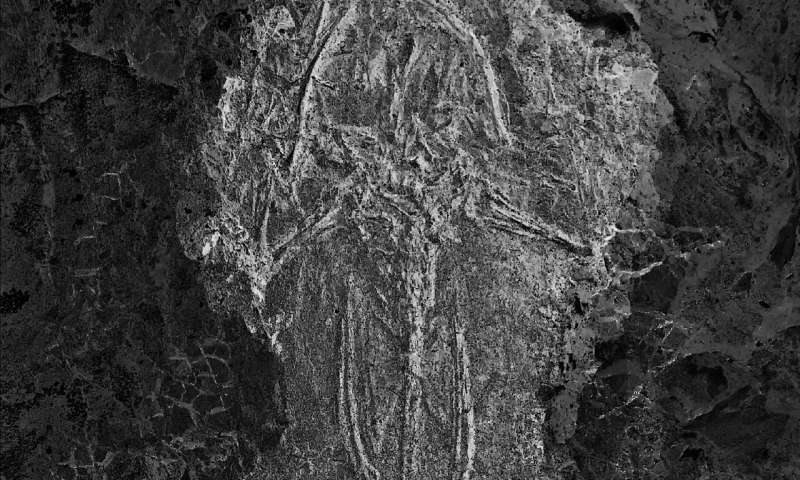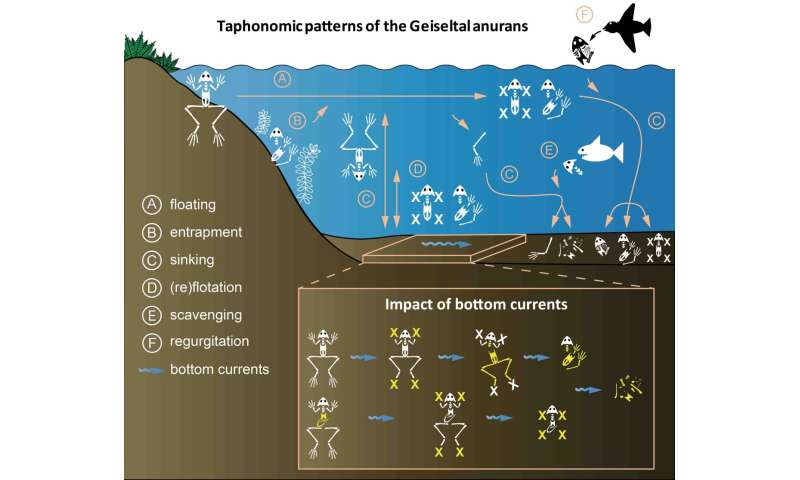Ancient swamp was a sex death trap for fossil frogs

University College Cork (UCC) paleontologists have discovered why hundreds of fossil frogs died in an ancient swamp 45 million years ago: It happened during mating.
The watery death trap in the Geiseltal area in central Germany claimed the lives of over 50,000 ancient beasts, including birds, horses, bats, fish and hundreds of frogs. Because of its unique geological features and thousands of fossils, the former coalfield of Geiseltal in Saxony-Anhalt is considered a scientific treasure trove, providing a unique window into how the Earth's plants and animals evolved over millions of years.
Nearly 50 million years ago—the middle Eocene—Earth was much warmer, and the area of Geiseltal was a swampy subtropical forest whose inhabitants included ancestors of the horse, large crocodiles, giant snakes, lizards, ground-dwelling birds and plenty of anurans, which are frogs and toads.
Previous studies have suggested that the Geiseltal frogs died during the desiccation of lakes and/or oxygen depletion in the water. But exactly what killed these creatures has long been a mystery—until now.
By studying the bones of the fossil frogs, the UCC team was able to narrow down the options. "As far as we can tell, the fossil frogs were healthy when they died, and the bones don't show any signs of predators or scavengers—there's also no evidence that they were washed in during floods, or died because the swamp dried up," said UCC researcher and study leader Daniel Falk. What's more, most of the Geiseltal fossil frogs are species that spend their lives on land, returning to the water only to breed. "By process of elimination, the only explanation that makes sense is that they died during mating."
-

Frog skeleton shows exceptional high completeness and articulation (false colours). Credit: D.Falk -

The taphonomy of the Geiseltal frogs at a glance. Credit: D.Falk
This phenomenon is common in frogs today. "Female frogs are at higher risk of drowning as they are often submerged by one or more males—this often happens in species that engage in mating congregations during the short explosive breeding season," said senior author Professor Maria McNamara. "What's really interesting is that fossil frogs from other sites also show these features, suggesting that the mating behaviors of modern frogs are really quite ancient and have been in place for at least 45 million years."
The research was published in Papers in Palaeontology.
More information: Falk et al, "The skeletal taphonomy of anurans from the Eocene Geiseltal Konservat-Lagerstätte, Germany: insights into the controls on fossil anuran preservation", Papers in Palaeontology (2022). DOI: 10.1002/spp2.1453
Provided by University College Cork




















